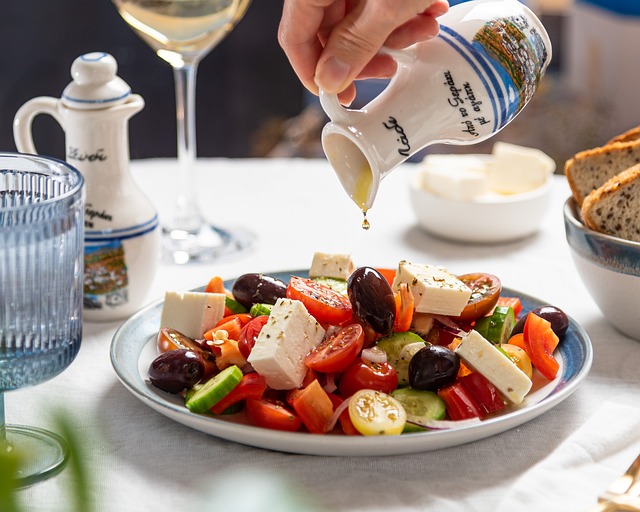Crafting a Nutritious Olive Oil & Vinegar Dressing

Nothing beats the zest and freshness of a homemade salad dressing made with olive oil and vinegar. Mixing your favorite vinegar with high-quality olive oil creates a delightful blend of flavors that can significantly enhance your salad, engage your taste buds, and offer numerous health benefits. This guide will walk you through how to craft a healthy olive oil and vinegar salad dressing.
Choose Your Base Oil Wisely
Your dressing’s foundation lies in the oil you select. Olive oil is a popular choice due to its plentiful health benefits and rich taste. It contains monounsaturated fats enriched with antioxidants, which help fight inflammation and heart-related issues.
For the best experience, opt for the finest quality extra virgin olive oil (EVOO). This less processed oil retains the majority of its flavors and nutrients, letting you enjoy the polyphenol-rich benefits of olive oil.
Discover The Ideal Vinegar Flavor
Vinegar adds the necessary acidity to your dressing, complementing the smoothness of olive oil. You have various vinegar options to choose from, such as balsamic, coconut, red wine, sherry, and apple cider vinegar.
Each vinegar type offers distinct flavors and potential health advantages. Balsamic vinegar, for example, is favored for its intricate sweetness and depth it brings to a dressing. Meanwhile, apple cider vinegar is renowned for possible health perks like aiding weight loss and enhancing digestion.
Experimenting with different flavors can help you find the vinegar taste you truly enjoy.
Harmonize The Flavors
Achieving the right balance between oil and acidity is crucial. A traditional vinaigrette typically follows a 3:1 ratio, meaning three parts oil to one part vinegar. You can adjust this ratio based on your personal taste and the type of vinegar and acidity level you prefer. Your ingredient list should consist of:
- ¾ cup olive oil
- ¼ cup vinegar
- Black pepper to taste
- Salt to taste
- Optional enhancements like honey, lemon juice, minced garlic, Dijon mustard, and herbs
Prepare The Base Mixture
Combine the olive oil and your chosen vinegar in a bowl and whisk until thoroughly blended. Season with salt and pepper to your liking, starting with a small amount and adjusting as needed to avoid over-seasoning.
Incorporate Additional Ingredients
Optional extras, such as honey, can add sweetness if the dressing feels too sharp. Lemon juice can brighten the dressing, imparting a citrusy kick if it’s too bland. Dijon mustard adds a tangy creaminess, while minced garlic boosts the flavor profile. Fresh herbs like thyme, basil, or parsley can lend a vibrant, aromatic touch to your salad dressing.
Achieve Stability Through Emulsification
An emulsified dressing remains mixed longer and coats your salad well. Use a food processor or blender to easily emulsify your dressing, especially when adding ingredients like honey and mustard. If those tools aren’t available, whisk the mixture vigorously to blend all ingredients smoothly. Store the dressing in a tightly sealed jar or glass bottle.
Creating your own nutritious homemade salad dressing is straightforward and enjoyable. By using quality ingredients, balancing the flavors well, and storing the dressing properly, you ensure a delightful result.



